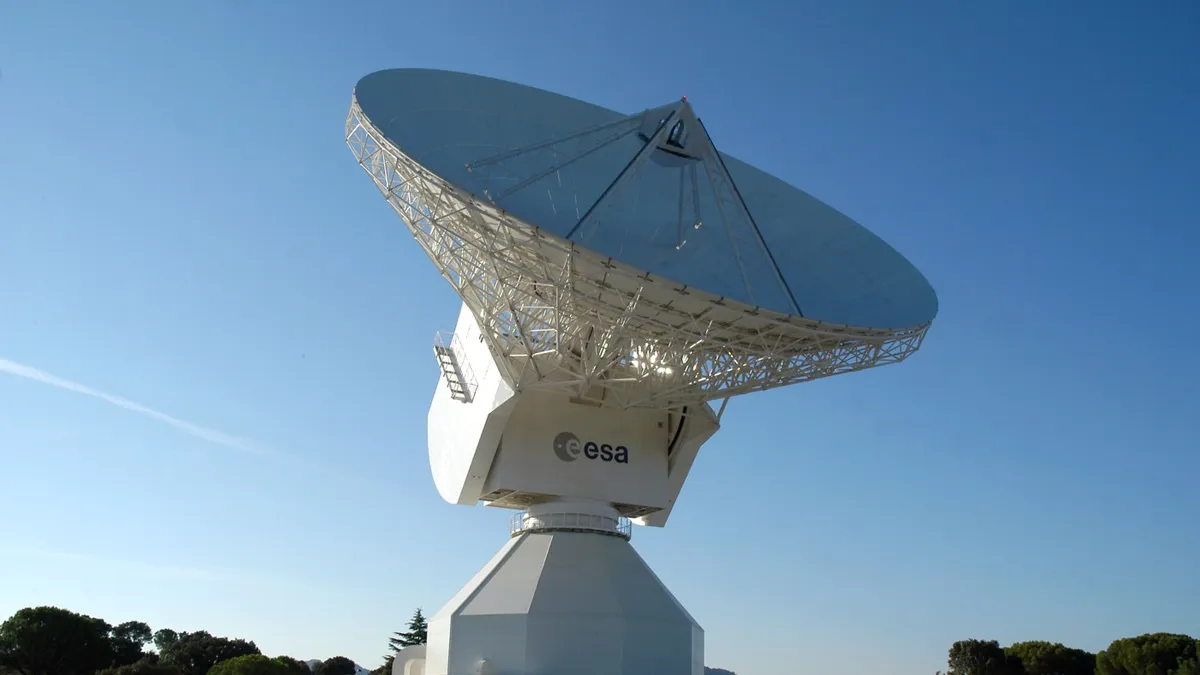
Johann Strauss II's renowned orchestral piece, By the Beautiful Blue Danube, has long been associated with the cosmos, primarily due to its iconic use in the 1968 classic film 2001: A Space Odyssey. In a visually stunning scene, the waltz accompanies a fictional spaceship as it docks with a space station, showcasing breathtaking views of Earth and the stars beyond. This week, the connection between this timeless waltz and outer space will deepen as the European Space Agency (ESA) broadcasts the piece into the cosmos.
On Saturday, the Vienna Symphony Orchestra will perform By the Beautiful Blue Danube live, while a large radio antenna in Spain beams the music into space. This special broadcast commemorates two significant milestones: the 50th anniversary of the ESA's establishment and the 200th anniversary of Strauss' birth. Interestingly, this beloved waltz was notably missing when NASA launched the Voyager Golden Records in 1977, which included 27 pieces of music, sounds, and images from Earth. These records were sent aboard the Voyager 1 and 2 probes, with Voyager 1 being the first human-made object to exit the solar system, and both probes continue their journey into deep space today.
According to Norbert Kettner, the director of the Vienna Tourist Board, the absence of By the Beautiful Blue Danube from the Voyager Golden Record is a "cosmic mistake." The Vienna Tourist Board is collaborating with the ESA to facilitate this unique broadcast. While another celebrated Austrian composer, Wolfgang Amadeus Mozart, was featured on the Golden Record, Strauss' contribution was overlooked, making this broadcast a significant rectification.
The radio antenna in Spain, measuring approximately 115 feet in diameter, is operated by the ESA and plays a crucial role in supporting uncrewed European missions. These missions include studying the Martian surface, mapping the stars, and capturing detailed images of the sun. However, this Saturday, the antenna will temporarily shift its focus to transmit the Vienna Symphony Orchestra's performance of By the Beautiful Blue Danube.
The audio from the performance will be transformed into an electromagnetic wave, which, while inaudible to the human ear, will be transmitted into space at the speed of light in the direction of Voyager 1. Remarkably, the music will travel swiftly enough to surpass the probe, which was launched in 1977 and exited the solar system in 2012, in just 23 hours. Josef Aschbacher, the director general of the ESA, emphasized the significance of this event, stating, "This demonstrates that our technology can transmit not only scientific data but also human art over long distances."
This event marks not the first instance of humans sending music into the depths of space, but it highlights the enduring relationship between art and exploration. As we celebrate the beauty of By the Beautiful Blue Danube, we are also reminded of the profound connections we share across the universe.